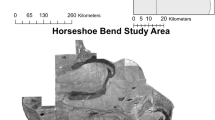Abstract
Indigenous forest management and conservation has a major importance for ecosystem services in the Eastern Afromontane Biodiversity Hotspots. In the southwestern highlands of Ethiopia, indigenous forests are particularly relevant for coffee producers, given that Coffea arabica grows as understory shrub in these forests. Currently, identifying and mapping understory coffee using remote sensing is still considered a challenging task because exotic tree plantations are largely overspread among indigenous forests. In this paper, a rule set was developed for recognizing indigenous forests from high-resolution satellite imagery using object-based image analysis (OBIA). The study applies a multiscale approach, in which aerial photographs (0.5 m), SPOT-5 satellite image (2.5 m), and field observations were integrated to discriminate indigenous from exotic forests. The rule-set combined segmentation (multiresolution, spectral difference, and contrast splitting), classification algorithms, and knowledge-based threshold functions. Moreover, principal component analysis and imagery texture indexes (e.g., homogeneity) were used to feed the classification algorithms. The results show that the applied methodology could separate indigenous from exotic forests with an overall accuracy of 84.3 % based on a fourfold cross-validation. The user and producer accuracy of indigenous forest were 84.7 and 94.4 %, respectively. On the other hand, exotic forest was classified with user accuracy of 87.9 % and producer accuracy of 61.9 %. This study contributes not only to coffee and environmental researchers but also benefits local communities by allowing the identification of indigenous and exotic forest areas, and leading to better informed natural resources management and conservation.





Similar content being viewed by others
References
Benz U, Hofmann P, Willhauck G, Lingenfelder I, Heynen M (2004) Multi-resolution, object-oriented fuzzy analysis of remote sensing data for GIS-ready information. ISPRS J Photogramm Remote Sens 58:239–258
Blaschke T (2010) Object based image analysis for remote sensing. ISPRS J Photogramm Remote Sens 61:2–16
CEPF (2012) Eastern Afromontagne Biodiversity Hotspot. Ecosystem Profile Summary. http://www.cepf.net. Accessed 24 January 2013
Chavez PS Jr (1996) Image-based atmospheric corrections. Rev Impr Photogramm Eng Remote Sens 62:1025–1036
Drǎguţ L, Tiede D, Levick SR (2010) ESP: a tool to estimate scale parameter for multiresolution image segmentation of remotely sensed data. Int J Geogr Inf Sci 24(6):859–871
Efron B, Tibshirani R (1993) An introduction to the bootstrap. Chapman and Hall, London
FAO (2005) Land Cover Classification System: classification concepts and user manual Software version 2, revised by Di Gregorio, A and Jansen LJM. Food and Agriculture Organization of the United Nations (FAO), Rome
Gabgkofner U, Holcomb D (2008) HP Resolution merge: ERDAS IMAGINE help. Leica geosystems geospatial imaging, LLC
Getahun A, Feyisa A, Belay G (1990) A brief history of FRC and forestry research in Ethiopia: 1890–1990. Forestry Research Centre, Addis Ababa
Gole TW, Borsch T, Denich M, Teketay D (2008) Floristic composition and environmental factors characterizing coffee forests in southwest Ethiopia. For Ecol Manag 255:2138–2150
Hall-Beyer M (2000) GLCM texture: an online tutorial. http://www.fp.ucalgary.ca/ mhallbey/transposing.html. Accessed February 2013
Haralick RM, Shanmugam K, Dinstein I (1973) Textural features for image classification. IEEE Trans Syst Man Cyber 3:610–621
Hernandez-Martinez G, Manson RH, Contreras Hernandez A (2009) Quantitative classification of coffee agroecosystems spanning a range of production intensities in central Veracruz. Mexico Agric Ecosyst Environ 134:89–98
MosaicMill (2013) EnsoMosaic aerial digital imaging and image processing system. http://www.ensomosaic.com/
Teillet PM, Guindon B, Goodenough DG (1982) On the slope and aspect correction of multispectral scanner data. Can J Remote Sens 8:84–106
Zhang Q, Wang J, Gong P, Shi P (2003) Study of urban spatial patterns from SPOT panchromatic imagery using textural analysis. Int J Remote Sens 24:4137–4160
Acknowledgments
This study is a part of The Climate Change Impacts on Ecosystem Services and Food Security in Eastern Africa (CHIESA) project funded by the Ministry for Foreign Affairs of Finland and International Center of Insect Physiology and Ecology (ICIPE). The authors wish to thank the European Space Agency (ESA) for providing the SPOT5 imagery to Marion Pfeifer, PI user agreement 6972.
Author information
Authors and Affiliations
Corresponding author
Rights and permissions
About this article
Cite this article
Hailu, B.T., Maeda, E.E., Hurskainen, P. et al. Object-based image analysis for distinguishing indigenous and exotic forests in coffee production areas of Ethiopia. Appl Geomat 6, 207–214 (2014). https://doi.org/10.1007/s12518-014-0136-x
Received:
Accepted:
Published:
Issue Date:
DOI: https://doi.org/10.1007/s12518-014-0136-x




